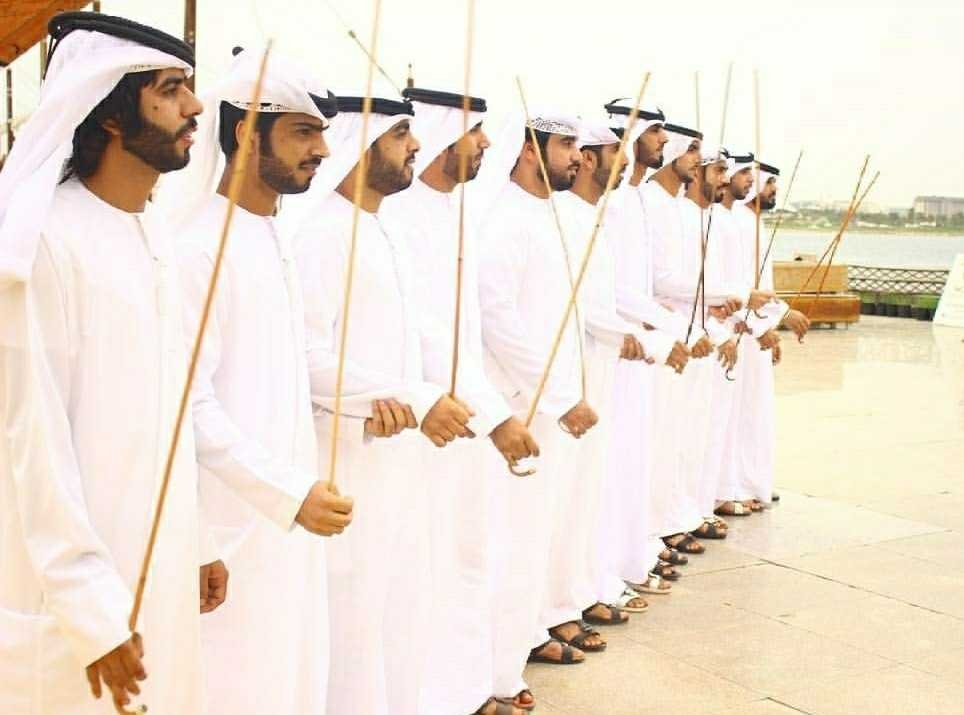The United Arab Emirates (UAE) is a land of rich cultural heritage, deeply rooted in traditions passed down through generations. Among its most treasured cultural expressions are traditional Emirati music and dance, which play a significant role in preserving the nation’s identity. From celebratory performances at weddings to rhythmic displays at national festivals, these art forms reflect the spirit and soul of Emirati society.
In this article, we will delve into the essence of Emirati music and dance, exploring their cultural significance, historical roots, and the role they play in modern-day UAE.
A Cultural Heritage in Rhythm and Movement

Traditional music and dance in the UAE are more than just forms of entertainment. They are powerful expressions of history, community, and pride. Music and dance have been used for centuries to celebrate life events, mark historical occasions, and bring people together.

In a nation where the desert and the sea have shaped both lifestyle and culture, the rhythms and movements of traditional performances reflect the resilience and joy of Emirati heritage.
The Role of Music in Emirati Culture

Emirati music is characterized by its vibrant use of drums, string instruments, and the distinctive sounds of the oud and rebab. The beats often mirror the rhythms of desert life and seafaring traditions. Songs are passed down through oral traditions, preserving stories of valor, love, and community.

Popular Traditional Musical Instruments
- Oud: A pear-shaped string instrument similar to a lute, often used to play soulful melodies.
- Rebab: A single-stringed bowed instrument, known for its haunting, expressive tones.
- Al-Ras: A large drum used to provide a rhythmic backbone to traditional music.
- Tambourine (Duff): Commonly played during festive occasions and celebrations.
Traditional Emirati Dance Forms
Emirati dances are often performed during national holidays, weddings, and community gatherings. The dances are dynamic, characterized by synchronized movements, rhythmic foot stomping, and the swaying of traditional garments.
1. Al-Ayyala
- Meaning and Origin: Al-Ayyala is one of the most iconic traditional dances of the UAE. It is a war dance that symbolizes unity and strength.
- Performance: Dancers carry thin bamboo sticks, representing swords, and move in synchronized lines to the beat of drums.
- Significance: This dance is performed at national events, symbolizing pride and heritage.
2. Al-Razfa
- Meaning and Origin: Al-Razfa is a poetic dance where performers recite traditional verses while moving to rhythmic drumming.
- Performance: Groups of men stand in rows, chanting and clapping in harmony.
- Significance: The dance often recounts tales of heroism and unity.
3. Al-Youla
- Meaning and Origin: Al-Youla is a traditional dance performed primarily by young men.
- Performance: Dancers skillfully spin and throw rifles or sticks in a captivating display of agility.
- Significance: It is both a celebratory dance and a test of skill, often performed at cultural festivals.
Preserving and Promoting Cultural Traditions
The UAE places immense value on preserving its cultural heritage. Organizations and institutions such as the Abu Dhabi Cultural Foundation and the Dubai Culture & Arts Authority actively promote traditional music and dance through workshops, events, and cultural programs.
Additionally, Emirati schools often include lessons on traditional dance and music in their curriculum, ensuring that younger generations stay connected to their roots.
The Role of Traditional Music and Dance in Modern UAE
While the UAE is known for its modern skyline and innovative spirit, traditional music and dance remain integral to its cultural identity. During National Day celebrations, traditional performances are showcased in city squares, heritage villages, and cultural festivals. Emirati weddings also feature lively dance performances, with guests joining in the celebratory rhythms.
Furthermore, international events like the Dubai Expo and cultural festivals provide a platform for Emirati artists to share their heritage with the world.
Conclusion
Traditional Emirati music and dance are living expressions of the UAE’s rich cultural heritage. They celebrate the nation’s history, community spirit, and enduring values. Through the rhythms of the drums and the elegance of synchronized movements, these traditions continue to bring people together and honor the country’s legacy.
Whether you witness an Al-Ayyala performance at a national celebration or hear the soulful melodies of an oud at a local event, the experience offers a deep connection to the vibrant cultural fabric of the UAE.
Next time you find yourself in Dubai, Abu Dhabi, or any part of the Emirates, take a moment to experience the beauty and significance of Emirati music and dance – a true celebration of tradition and pride.
Also read: The Impact of 3D Printing on UAE’s Construction Industry














